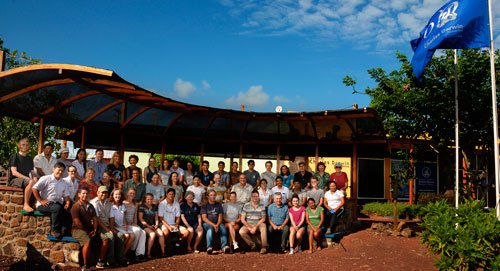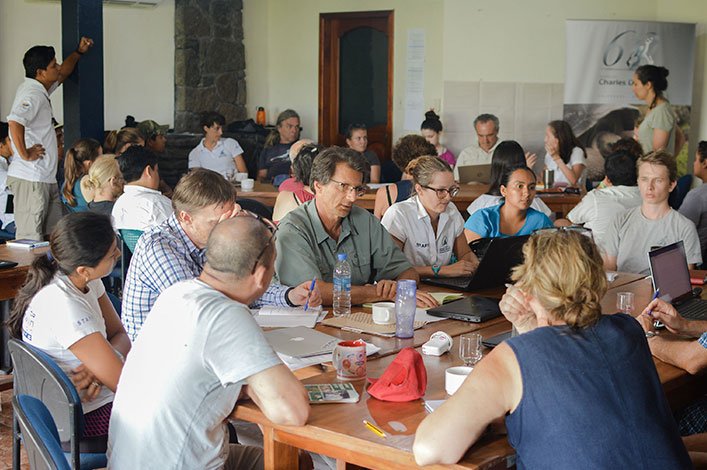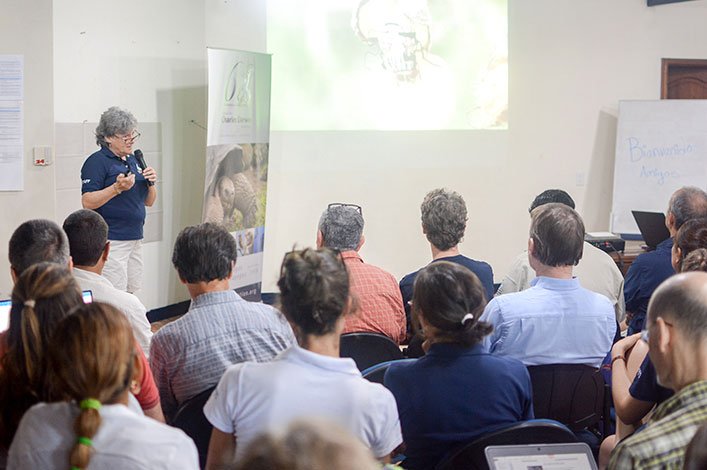On February 7th and 8th, the Charles Darwin Research Station held the international Workshop on Advances in the Search for Solutions for the Control of the Avian Parasite Philornis downsi and for the conservation of Galapagos landbirds.
The event was attended by national and international experts who discussed strategies to protect endemic birds from this invasive parasitic fly that is affecting the survival of individuals of twenty species of Galápagos landbirds, nine of these species with threatened status according to the International Union for Conservation of Nature - IUCN. Within these birds is the mangrove finch with critical status.

The event was an initiative of the Charles Darwin Foundation (CDF) and the Galapagos National Park Directorate (GNPD).
The larvae of this parasitic fly feed on the blood of the nestlings and live at the base of the nests. A short-term control method that is being developed by scientists from the University of Vienna, CDF and GNPD, which is having preliminary success, is the injection of a low toxicity insecticide directed to the base of the nest where the fly larvae live.
Dr. George Heimpel, an entomologist at the University of Minnesota said "the work that is being done to inject safe insecticides into nests is nothing short of inspiring." He added "advances in understanding the ecology and threat level. Many of the land birds in Galapagos are truly impressive, in addition to the investigations to understand the influence of the microbes associated with Philornis downsi on their behavior and development ".

As a permanent and sustainable method of control, the most feasible until now is the use of natural enemies of Philornis downsi in a biological control program. Currently, scientists from the University of Minnesota along with CDF and support from the GNPD, Escuela Politécnica del Litoral (ESPOL) and the National Institute of Biodiversity (INABIO) are evaluating a possible candidate, a parasitic wasp found in continental Ecuador, Conura annulifera. During the Workshop there was a working meeting with members of the GNPD, Regulation and Control Agency for Biosecurity and Quarantine for Galapagos (ABG), and scientists to plan the next steps to determine that this parasitic wasp will not affect endemic species in case to be used in a biological control program on the islands.

The coordinator of the working group of Philornis downsi on behalf of the Charles Darwin Foundation, Dr. Charlotte Causton, stated "the success of this project depends on the close national and international collaborations to jointly solve the problem of Philornis downsi as soon as possible. It is very gratifying to see such a strong commitment."





